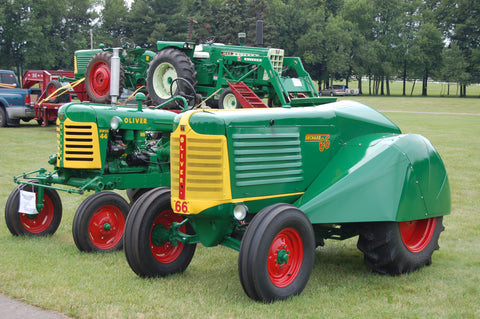Orchard or vineyard production is a multi-year project, and once the dimensions are set and rows are planted, the machines used need to fit in between them.

Newer orchard or vineyard tractors—sometimes called “crawlers”—are compact tractors that are designed to fit in small and narrow workspaces, as well as maneuver around tight corners. Essentially, these are specialty tractors that can be variously billed as “narrow,” or “low-profile.” However, older all-purpose compact tractors often do the trick.
A true dedicated orchard tractor is often recognizable by odd-looking body work. Wheels and moving parts are often hooded to protect from falling branches and debris. Many of these remarkable tractors are regarded as collector’s items.
The shape and special features of the tractor usually depend on the crop being grown: tractors designed for working in citrus orchards often have to have special tires, as dried citrus thorns are strong enough to puncture rubber.
As for size: most orchard proprietors space rows according to the size of their machinery, and not the other way around. However, for orchardists taking over established plantings, tractor selection is obviously contingent on row width.
For trees such as apples or pears (that are not pruned in a cordon or espalier shape), the rows tend to be wider, so a low-profile tractor that can pass under the canopy is ideal. For vines, or trees trained on a cordon—where canopy height isn’t an issue—a narrow profile tractor is best.
Orchard tractors should be equipped with enough horsepower to tow or bear all the necessary equipment: including trailers, and sprayers.
Basically, an orchard tractor can be a specially-designed machine, or just a sufficiently compact machine with the requisite adjustments for the crop being grown.

